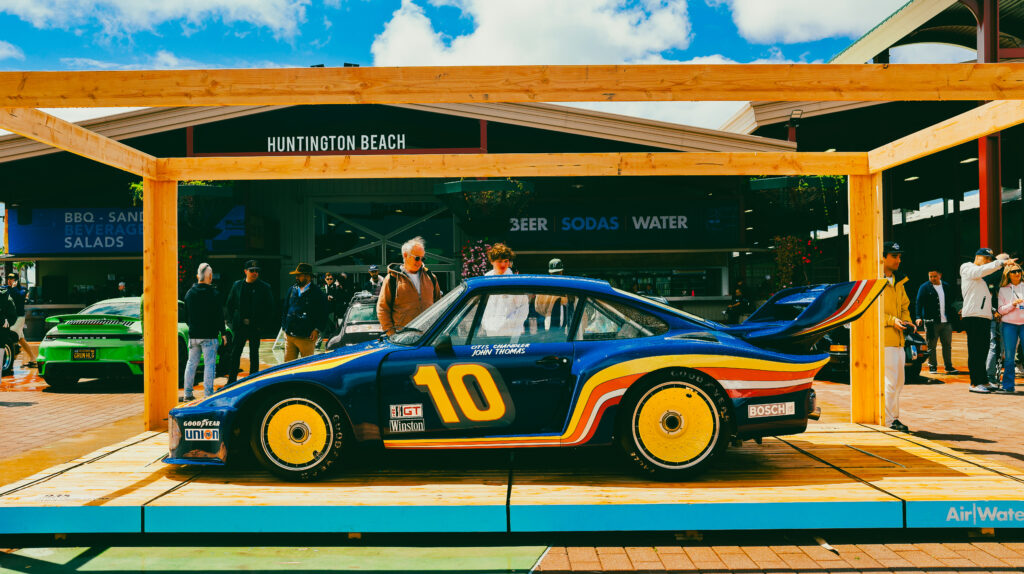
Air Water is a huge Porsche show put on by the organizers of the famous Luftgekühlt, but it features both old and new Porsche’s instead of Luft’s water-cooled only theme. This years edition was hosted on a Saturday of wild weather in Costa Mesa, California and featured some incredible Porsche’s – from some stunning racecars to modern 991’s and 992’s in every paint-to-sample color you could ask for. Here are ten of my favorites.
2011 Flying Lizard Motorsports 911 RSR By Troy Lee Designs
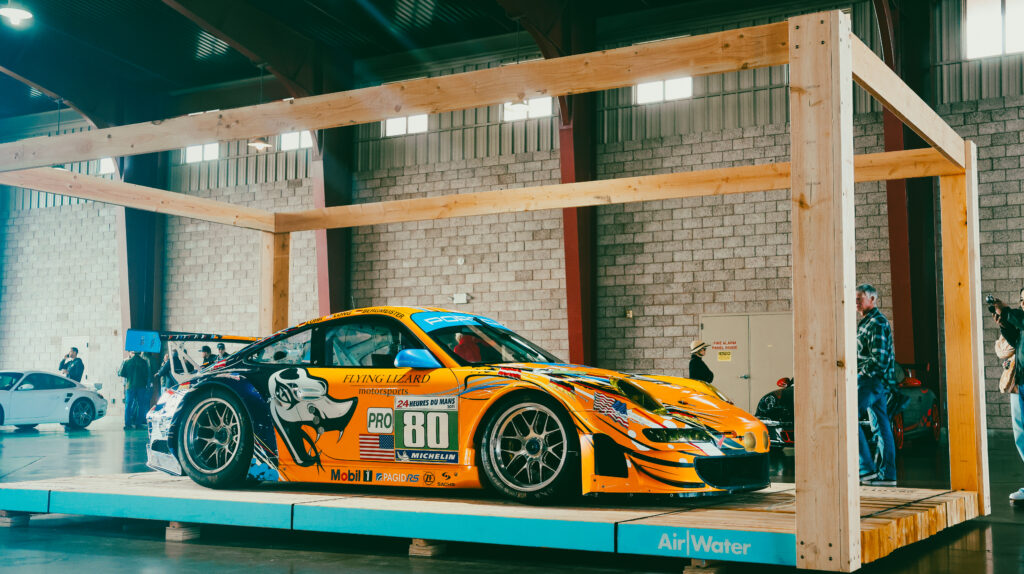
This Porsche 997 911 RSR was on display in this “frame” (I don’t know what else you would call it), which made for very cool photos. This particular car competed at Le Mans 2011, driven by Patrick Long, (who is one of the organizers of Air Water) Jorg Bergmeister, and Lucas Luhr. The incredible livery was designed by famous helmet painter Troy Lee, and along with it’s sister Flying Lizard RSR commemorated the 28 drivers who had won Le Mans overall in a Porsche.
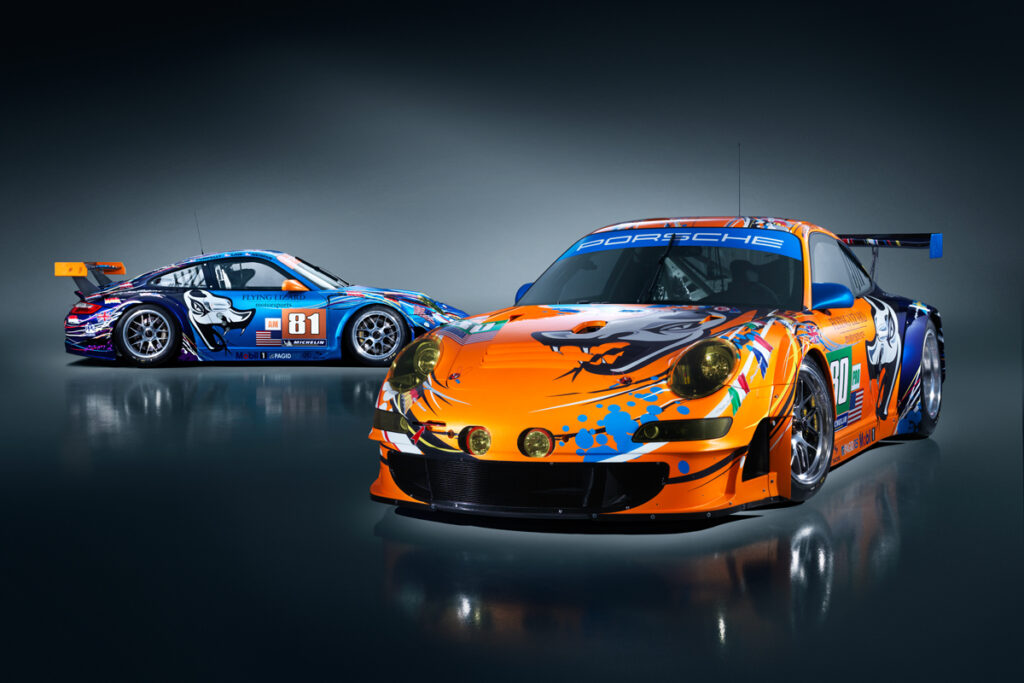
The #80 and #81 Flying Lizard Porsche’s. Photo: Flying Lizard Motorsports
This car features the names and national flags of half of the drivers, and is even signed by some of them. This car finished in sixth in GTE Pro at Le Mans, but it’s sister car did not finish. Flying Lizard were very unlucky at Le Mans, and never won despite all of their success in the ALMS.
1982 935 Bob Akin L1
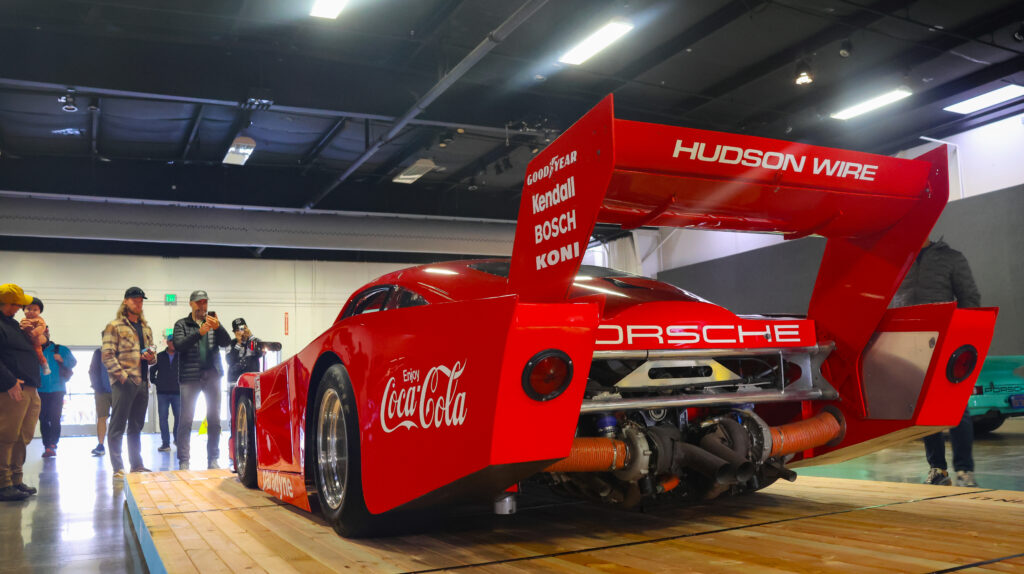
While Bob Akin’s Coca-Cola 962 was more famous, this 935 was the original Coca-Cola Porsche. By 1982, the original 935 was no longer competitive, so Bob Akin commissioned Chuck Gaa to build a “Super GTP” 935. The car was built on a bespoke aluminum monocoque, so calling it a 935 is a bit of a stretch. The front nose was actually taken from a GTP Lola T600, which shows just how radical this car is. The 3.2 liter flat-six makes more than 800 horsepower, making this car among the fastest “935’s” ever.
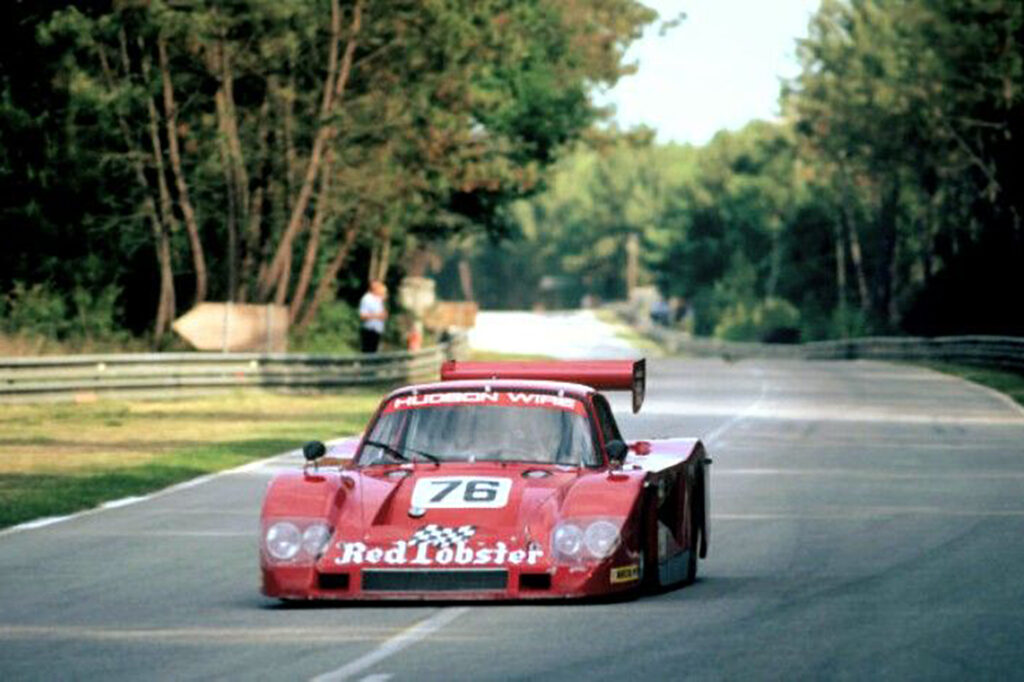
The 935 L1 at Le Mans 1982, wearing Red Lobster sponsorship. Photo: Canepa
This car only competed in five races, the second of which was Le Mans 1982. The debut year for Group C, 1982’s Le Mans also featured many wild GT cars such as the Ferrari 512/BB LM, the BMW M1, the Lancia Scorpion and of course many 935’s. This car qualified in 32nd place but the race didn’t go well, as the reserve gas tank had an issue and this car retired after only two hours. This car would then do several IMSA races in 1982, driven by Akin, Derek Bell, and Hurley Haywood. The best finish they could manage was a fourth at the Mid-Ohio 6 hours. This car is currently for sale with Canepa, wearing it’s iconic Coca-Cola livery.
2000 Lola-Porsche B2K/10
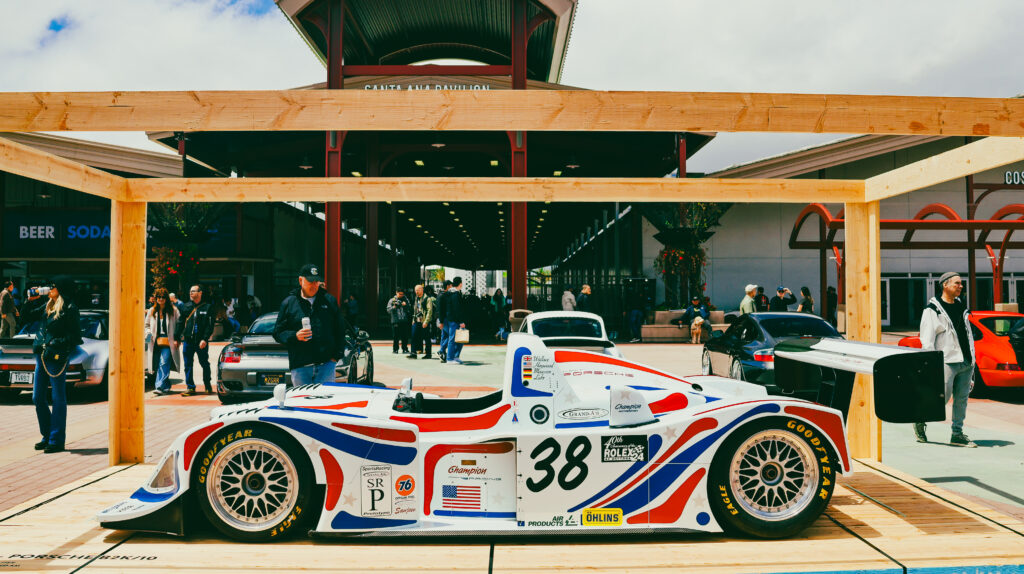
Champion Racing were one of the absolute best teams in the American Le Mans Series in the 2000’s, and while they got their championships with the unbeatable Audi R8 and R10, this Porsche was their original LMP competitor. After running a Porsche 911 GT1 for several years, but having nowhere to run it in 2000, work began on this car. Developed by Norbert Singer, the engineer who played a major part on every Porsche endurance racer since the 917, and Brad Kettler (who would later be a key part of Audi’s dominance later) developed a Lola B2K/10 to fit the reliable flat-six and sequential shifter from the 911 GT1/98 that had won Le Mans two years before. This car ran two races in 2000, in advance of it’s debut at the Daytona 24 Hours in 2001. It was driven by a host of iconic drivers, including Andy Wallace, Bob Wollek, Hurley Haywood, and Lucas Luhr.
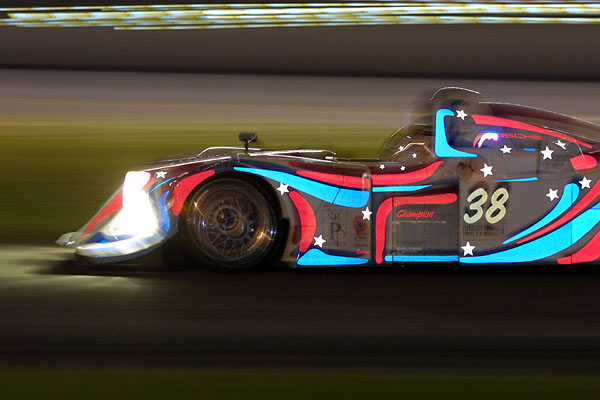
This car also has a glow in the dark livery, which looked amazing at Daytona. The red, white, and blue was a change from the usual Champion colors as a tribute to the victims of 9/11. Photo: unknown
It didn’t finish either of those races unfortunately, and Daytona didn’t go much better as the car retired seven hours in. It did improve with time however, and this car finished second at the Daytona season finale. The 2002 Daytona 24 went much better than the previous year, and this car finished fourth. By this point, Champion were already racing their R8, and sold the car to Pegasus Racing who didn’t get any notable results with it. This car is currently owned by Wayne Dempsey, where it makes the occasional historic racing appearance. While this car wasn’t a success, it is still a very unique prototype that would be quite a blast to race around Daytona.
1970 914-6 GT
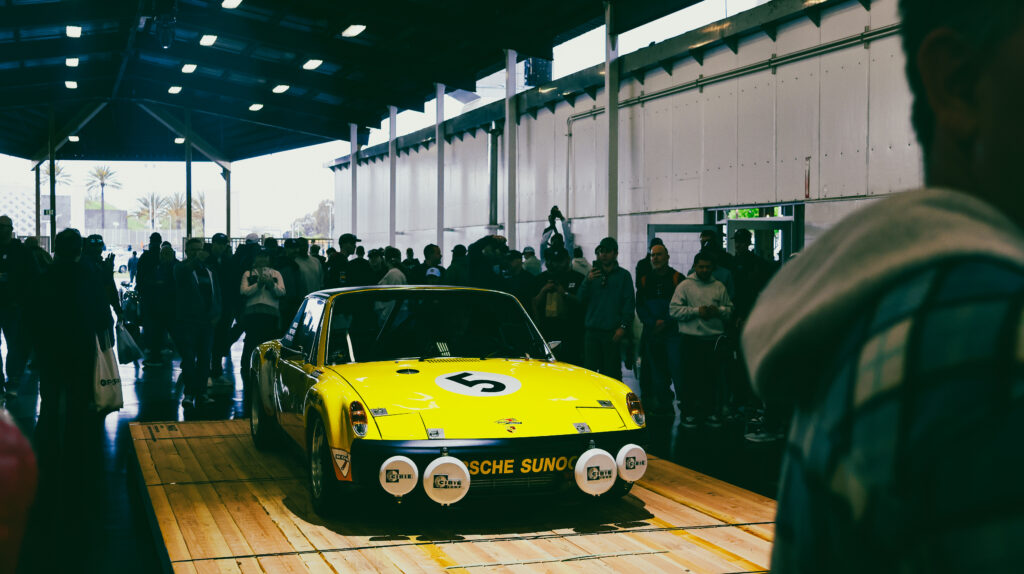
This Porsche 914-6 punched way above it’s weight at the 1971 24 Hours of Daytona, where it finished seventh overall against a field that contained four Porsche 917’s and five Ferrari 512’s, let alone the many other GT 911’s, Corvette’s and Camaro’s. Back then, if a GT car had a relatively trouble free run they could have a very solid overall finish, such as the 911 RSR than won the Daytona 24 overall two years later. This car also managed a fourth in class at Sebring, and won the 1971 6 Hours of Saint Croix overall. This car was sold new to Canadian journalist and driver Jacques Duval, who raced under Sunoco sponsorship. The 914-6 GT was the ultimate 914, with the 2.0 liter 906-spec flat-six, wider flares and wheels, a long range fuel tank, and many other upgrades.

The 1971 Daytona 24, this 914-6 being followed by the famous Penske Ferrari 512. Photo: unknown
This car set a auction record for a 914 in 2020, selling for $995,000 at the Gooding & Company Scottsdale auction. It was started up at Air Water, and sounded pretty amazing.
1979 935
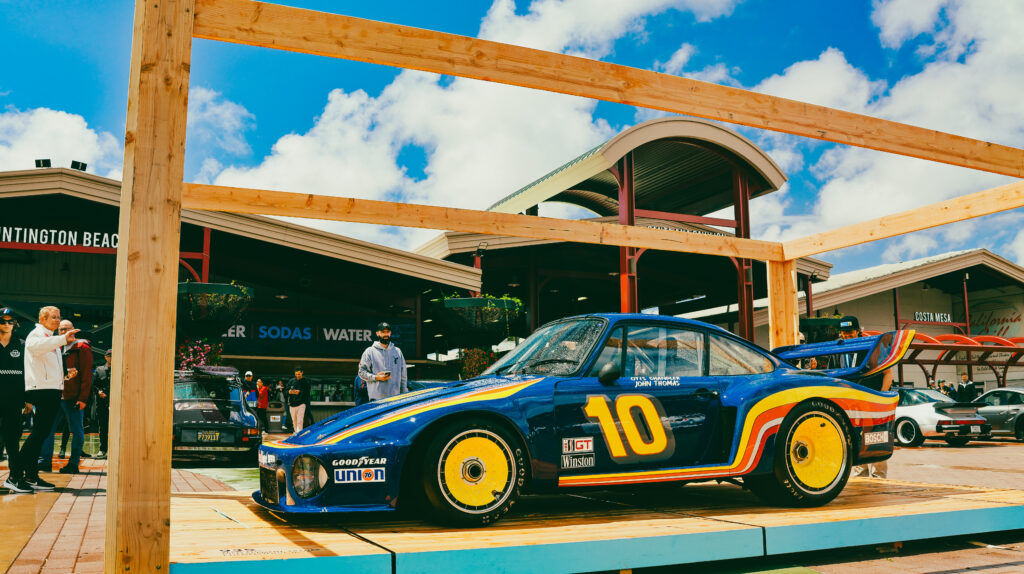
It would be very difficult for me to pick a favorite car from this list, but this 935 is right up there. 1979 was the final year that the Works sold 935’s to customers, and many were later converted to the very popular Kremer K3 and K4 specs. While the 935/79 was the most advanced 935 built by the factory, it was still a beast with more than 650 horsepower and only a four-speed transmission. It was purchased new by Otis Chandler, the founder of the Los Angeles Times, who had an incredible collection that included everything from pre-war icons like the Duesenberg Model J to two 917’s. Chandler didn’t buy the car with the intention to take it racing much, as this car was painted in Vintage Racing Blue to match his Penske 917/30 instead of the plain white that most 935’s were delivered in. This car cost a insane $135,000 new, over $600K today if you adjusted for inflation.
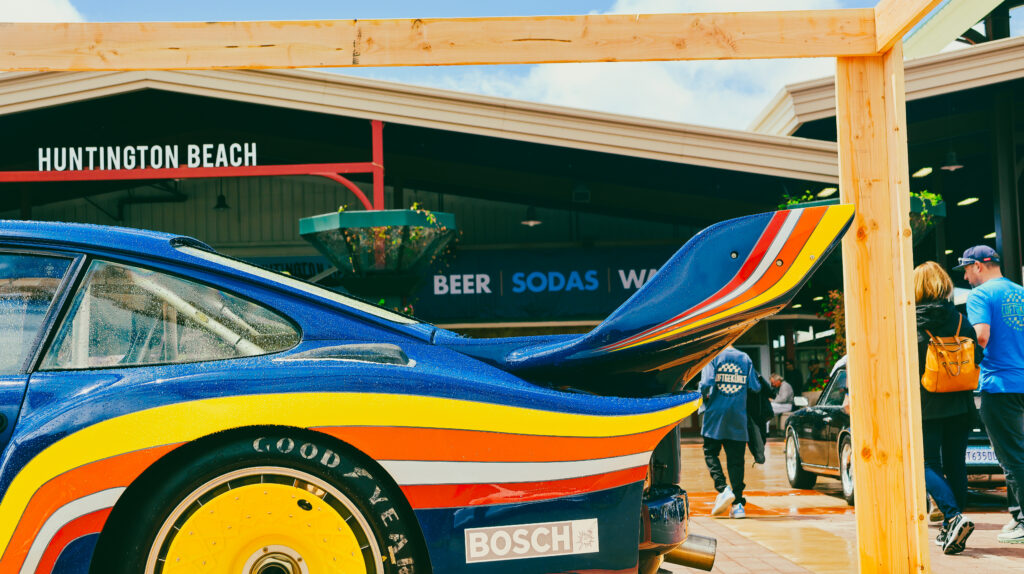
The early 935’s are beautiful cars in my opinion, and the way this livery flows on the rear fender looks sublime.
This car only raced once, in the LA Times Grand Prix IMSA race where it was driven by Chandler and John Morton. They were running well, but sadly had to retire due to an engine issue. After the race, this car was sent to Andial, who installed a new twin-turbo engine. The 935 came from the Works with a single turbo for top speed at tracks like Daytona and Le Mans, but the twin turbo motor was more reliable and had a better torque curve. The car has been converted back to a single-turbo setup since and has rarely been driven, making it one of the best preserved 935’s left.
2011 911 GT3 RS 4.0
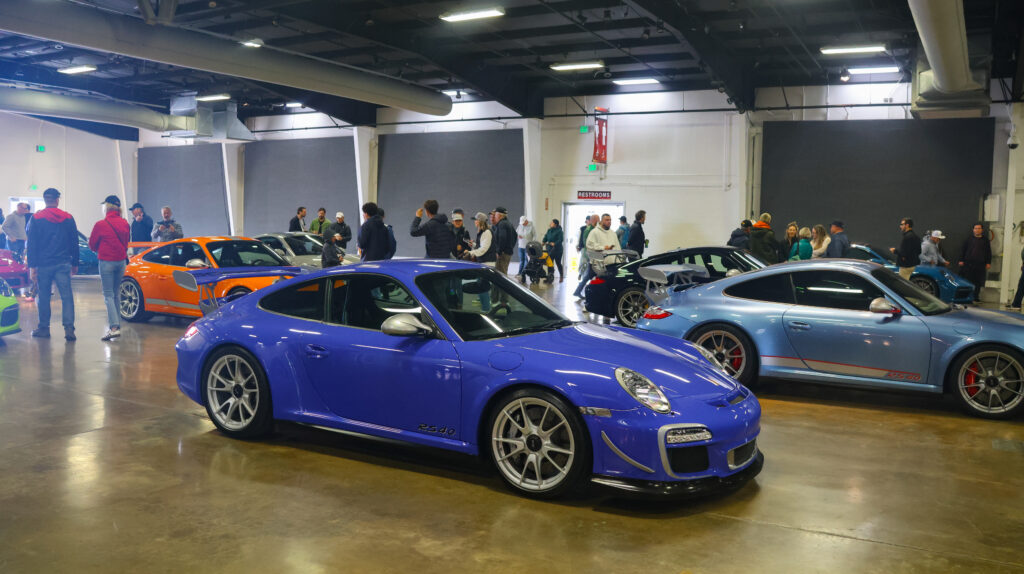
While the racecars really stole the show for me, this incredible Maritime Blue GT3 RS 4.0, along with the three other paint-to-sample GT3 RS 4.0’s next to it were impossible to ignore. The 911 GT3 RS 4.0 is the most desirable version of arguably the best GT3 RS that has been built, the 997. The 997 was the right balance between old and modern, and most importantly it was the last RS powered by the legendary Mezger flat-six. The 4.0 took it to another level. It was 22 pounds lighter thanks to many carbon parts, and it’s engine made almost 500 horsepower and used the crankshaft from the 911 RSR. The vast majority of the 600 GT3 RS 4.0 were white or black, 39 cars were finished in paint-to-sample colors, an option not available to most customers.
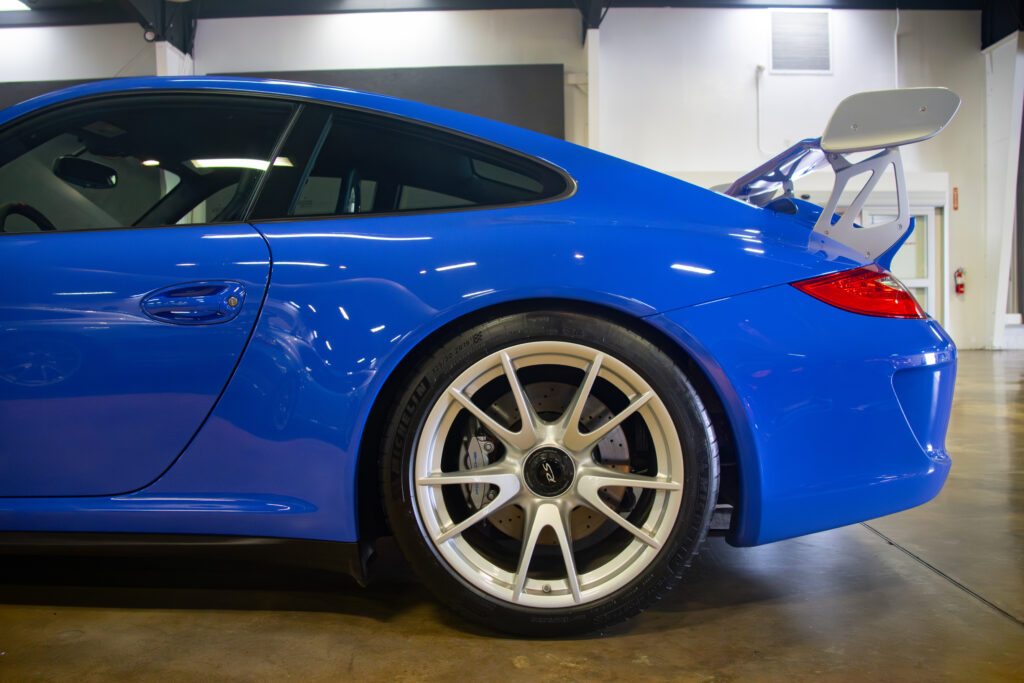
Whoever specced this car had impeccable taste.
This particular car is finished in Maritime Blue, a very rare color that has appeared in the Porsche options list occasionally since 1979. There are only three GT3 RS 4.0 finished in this color.
911 Carrera RS 3.8

There was a amazing lineup of old and new paint-to-sample Porsche’s, and this 911 Carrera RS was probably my favorite of them. This car is finished in Speed Yellow, one of the best colors for a 993. Only 1,104 Carrera RS 3.8 were built, as a homologation car for the new 911 RSR. The RS 3.8 was the equivalent of todays GT3, with a powerful naturally aspirated flat-six and reduced weight. The Carrera RS 3.8 would be the peak of the 993 range, if not for the even rarer GT2.
2025 911 GT3 R Rennsport

By far the newest car on this list, the GT3 R Rennsport is the ultimate unrestricted version of the GT3 R. Revealed at Rennsport Reunion 7 this car is not homologated for GT3 rules, so it car run as much power and downforce as the engineers at Weissach can get out of it. And not suprisingly, it makes 620 horsepower, 55 more than the standard GT3 R. The engine also revs to 9400 RPM, which should sound similar to the ear-shattering 991 911 RSR that became a fan favorite instantly. The aerodynamics are quite different to the original GT3 R, most notably with that large 935-inspired rear wing. Only 77 of these will be built for track use around the world, and some have already been delivered such as this gorgeous blue car in the “Speed Icon” livery that reminds me of the John Fitzpatrick 935 and 956.

The rear wing is inspired by the Brumos Racing 935/78. I’m not sure why it isn’t inspired by the 935/78 in general, as all of them had the same wing. Photo: Porsche
Hopefully the lucky owners of these actually use them on track, as the last track-only special built by Porsche, the 935/19 has often been seen for sale with low miles but rarely seen on the tracks it was made for.
2018 911 RSR
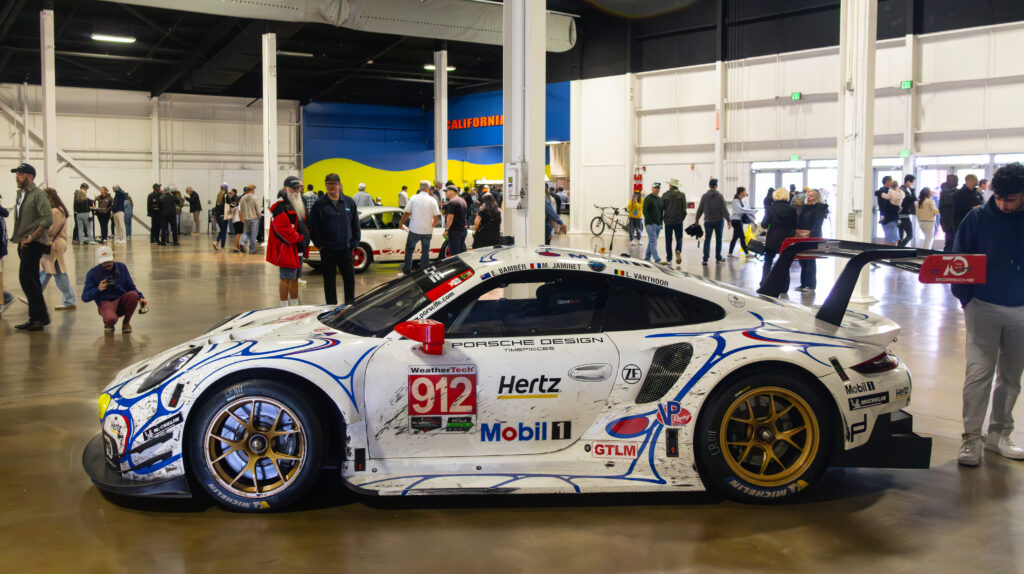
Speaking of the 991 911 RSR, there was one at Air Water. This car raced in the the 2018 Petit Le Mans at Road Atlanta, driven by Earl Bamber, Laurens Vanthoor, and Mathieu Jaminet. Both factory RSR’s wore a tribute livery for the 20th anniversary of the 1998 Le Mans winning 911 GT1/98. 2018 was the year of throwback liveries for Porsche due to their 70th anniversary, with 911 RSR’s wearing Rothmans 962 and Pink Pig 917 colors at Le Mans too. This car led the race for a while, but a puncture and a drive-through penalty ultimately kept it out of contention for the win.
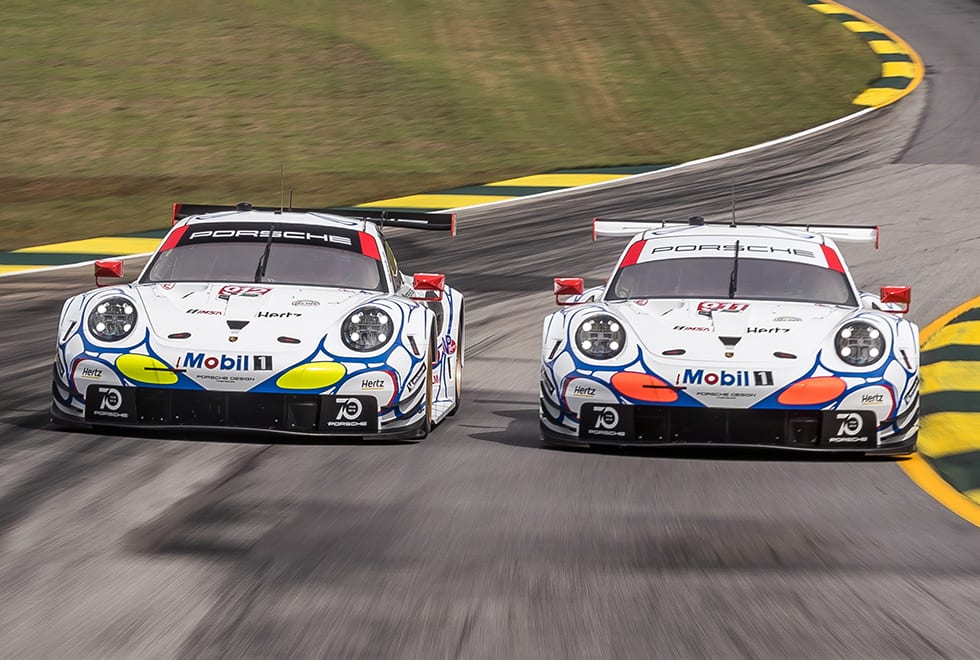
The pair of GT1/98 tribute RSR’s at Petit Le Mans 2018. IMSA needs to have a throwback weekend like NASCAR where all the teams have to do a retro livery. Photo: Porsche
The sister #911 car won the race, and both of them were preserved as they were dirt, damage, and all after ten hours of one of the most chaotic endurance races. The 991 RSR is my (and basically everyone else’s) favorite modern Porsche racecar, thanks to it’s absolutely insane exhaust note, and I was very happy to finally see one in person. Now I just need to see one on track…
Schuppan 962 CR

Saving the wildest for last, this Schuppan 962 CR is one of only four built. Vern Schuppan is an Australian racing driver who won Le Mans in 1980 driving for the Works Porsche team. By 1987, Schuppan had his own team and raced 962’s in WSC, IMSA and in Japan. Then Kosho, a Japanese investment banking company expressed their interest in a road legal 962, and they would buy several cars. The car would be built by Vern Schuppan Ltd or VSL, and they hired more than twenty engineers to develop the car. The first prototype was known as the 962 LM, but then Kosho partially pulled out and another Japanese company, Art Sports joined the project. They wanted a slightly more reasonable road car, if that is even possible with a 962. Eventually the decision was made to produce 50 of the 962 CR, which would be powered by the 600 horsepower IMSA spec engine and with a redesigned carbon tub that was two inches wider than the old one for extra space inside. The 962CR was one of the fastest road cars of it’s day, with a top speed around 215 MPH. Inside the interior has a few creature comforts, such as air conditioning and a backup camera.
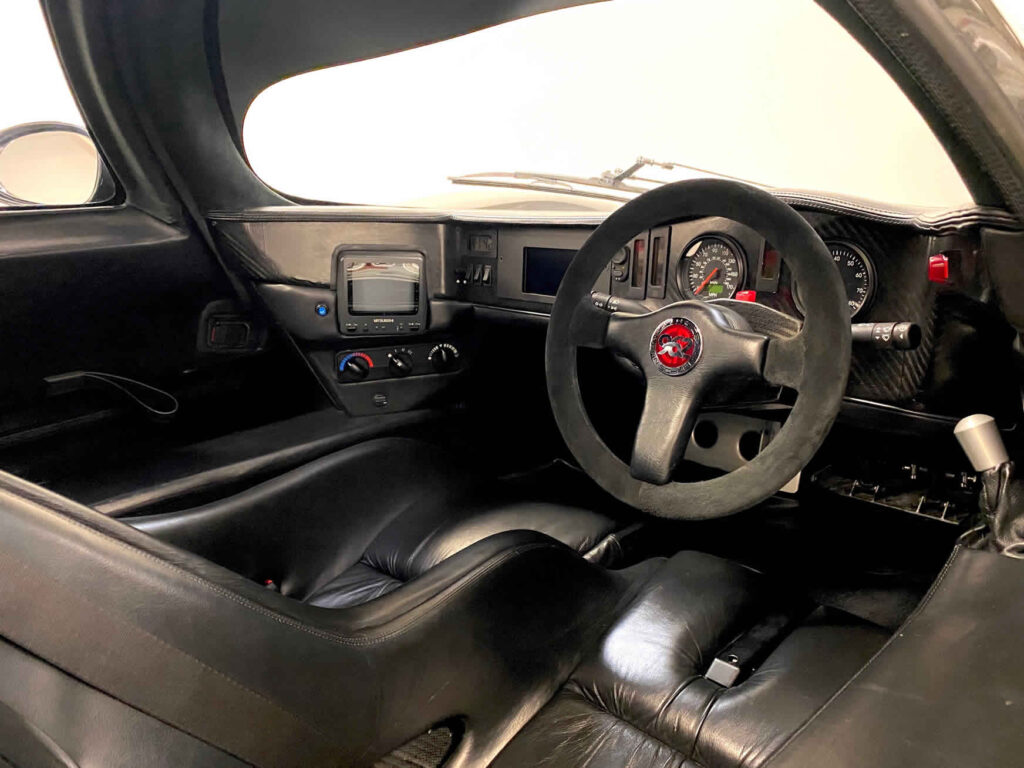
The very snug interior of the 962CR Photo: Elferspot
The 962CR cost $1.5 million US dollars, which was more than twice as much as any other supercar of the time. But the car was launched right when the financial crisis hit. Matters were made worse when Art Sports put a Porsche crest on the car and claimed they had the rights to it, which caused Porsche to immediately stop selling parts to VSL. Then Art Sports lowered the number of cars they would buy from fifty to twenty, and then to ten even though VSL wouldn’t be viable at that level. They then refused to pay for the next two cars and Schuppan couldn’t afford to continue fighting them. In the end, VSL collapsed thanks to Art Sports ruthless effort. Only seven 962CR and 962LM were built, and they are an incredibly rare sight today. I’m not sure which chassis this particular car is, as the histories of these cars are pretty confusing. This car was displayed by Canepa, and I assume it has only recently arrived in the US.
So there it is, my top ten Porsche’s from Air Water 2025. It was a great event despite the crazy weather, and I would recommend it to anyone who has a interest in Porsche.